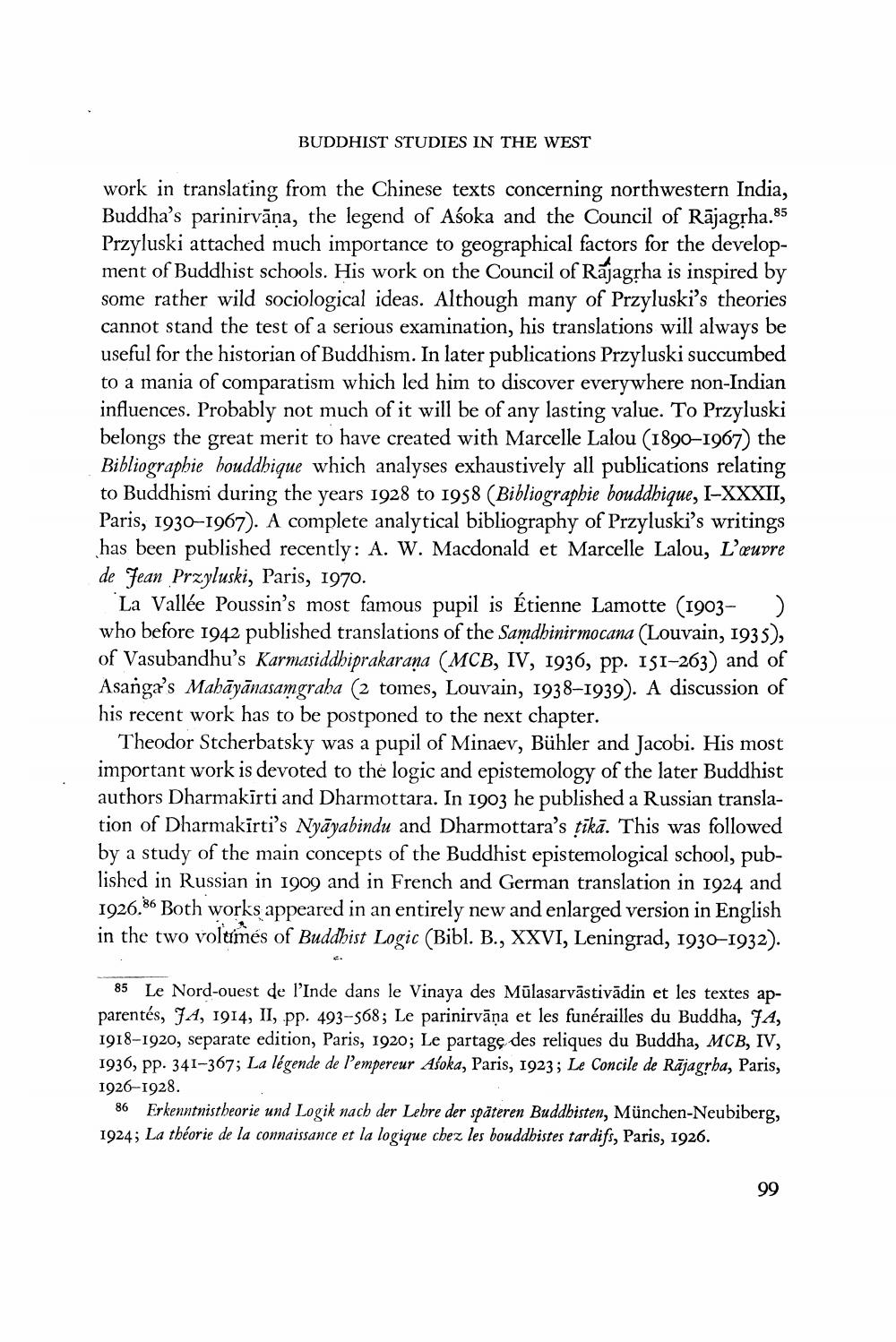________________
BUDDHIST STUDIES IN THE WEST
work in translating from the Chinese texts concerning northwestern India, Buddha's parinirvāṇa, the legend of Asoka and the Council of Rājagļha.85 Przyluski attached much importance to geographical factors for the development of Buddhist schools. His work on the Council of Rajagrha is inspired by some rather wild sociological ideas. Although many of Przyluski's theories cannot stand the test of a serious examination, his translations will always be useful for the historian of Buddhism. In later publications Przyluski succumbed to a mania of comparatism which led him to discover everywhere non-Indian influences. Probably not much of it will be of any lasting value. To Przyluski belongs the great merit to have created with Marcelle Lalou (1890–1967) the Bibliographie bouddhique which analyses exhaustively all publications relating to Buddhism during the years 1928 to 1958 (Bibliographie bouddhique, IParis, 1930–1967). A complete analytical bibliography of Przyluski's writings has been published recently: A. W. Macdonald et Marcelle Lalou, L'quvre de Jean Przyluski, Paris, 1970.
La Vallée Poussin's most famous pupil is Étienne Lamotte (1903– ) who before 1942 published translations of the Samdhinirmocana (Louvain, 1935), of Vasubandhu's Karmasiddhiprakarana (MCB, IV, 1936, pp. 151-263) and of Asanga's Mahāyānasamgraha (2 tomes, Louvain, 1938-1939). A discussion of his recent work has to be postponed to the next chapter.
Theodor Stcherbatsky was a pupil of Minaev, Bühler and Jacobi. His most important work is devoted to the logic and epistemology of the later Buddhist authors Dharmakirti and Dharmottara. In 1903 he published a Russian translation of Dharmakirti's Nyāyabindu and Dharmottara's tīkā. This was followed by a study of the main concepts of the Buddhist epistemological school, published in Russian in 1909 and in French and German translation in 1924 and 1926.86 Both works appeared in an entirely new and enlarged version in English in the two volumes of Buddhist Logic (Bibl. B., XXVI, Leningrad, 1930–1932).
85 Le Nord-ouest de l'Inde dans le Vinaya des Mūlasarvāstivādin et les textes apparentés, JA, 1914, II, pp. 493-568; Le parinirvāṇa et les funérailles du Buddha, JA, 1918-1920, separate edition, Paris, 1920; Le partage des reliques du Buddha, MCB, IV, 1936, pp. 341-367; La légende de l'empereur Asoka, Paris, 1923; Le Concile de Rājagrha, Paris, 1926-1928.
86 Erkenntnistheorie und Logik nach der Lebre der späteren Buddhisten, München-Neubiberg, 1924; La théorie de la connaissance et la logique chez les bouddhistes tardifs, Paris, 1926.
99




